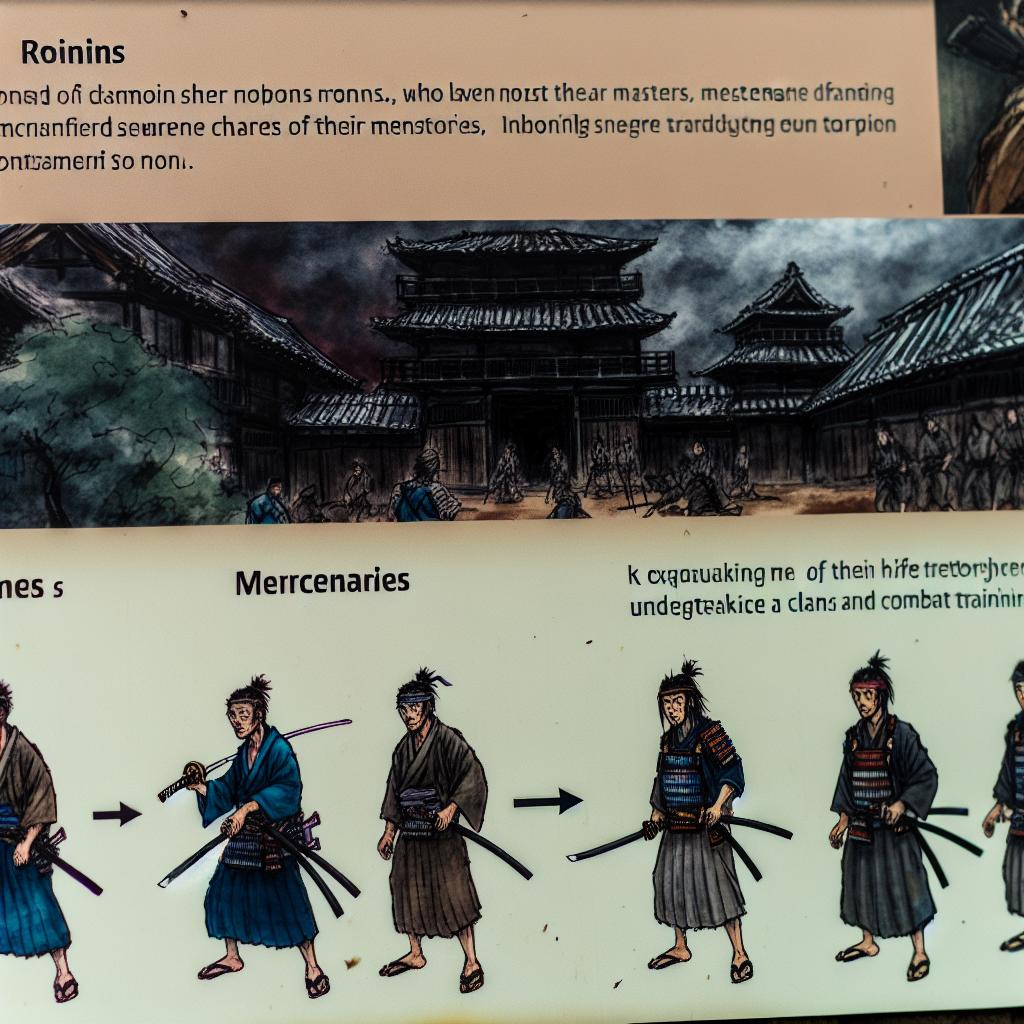Understanding the Role of Ronin
The term ronin refers to a samurai who, during Japan’s feudal era, had no lord or master either due to their master’s death or a loss of favor. These ronin existed during a time known as the Sengoku period, a fractious and tumultuous era when power dynamics shifted frequently, leaving many samurai without leadership or purpose. Traditionally, samurai served a specific daimyo or feudal lord, and their lives were dedicated to upholding the lord’s honor and aims.
The Decline of Samurai Lords
The role of the samurai began to decline during the late 16th and early 17th centuries, particularly following the establishment of the Tokugawa shogunate. This period brought a semblance of peace and stability, leading to a reduced need for the large armies that daimyo once maintained. As a result, many samurai found themselves without a master, thus becoming ronin. This transition greatly impacted the socio-political fabric of Japan at the time, as the lack of conflict undercut the very foundation of the samurai class’s existence.
Economic Pressures and Social Mobility
With no consistent income from a daimyo, ronin often faced severe economic hardships. They were obliged to find new means of livelihood, and one of the most viable options was to become mercenaries. The skills and combat experience they possessed were in demand by other lords who sought to expand their influence through military prowess or by wealthy individuals with personal armies. This economic pressure not only altered their professional lives but also led to changes in their social status. Traditionally bound by a strict code and allegiance to a lord, the ronin found themselves navigating a more fluid social hierarchy, where their skills could offer both setbacks and opportunities.
The Ronin as Mercenaries
Becoming a mercenary provided ronin with an opportunity to leverage their martial skills for income. These mercenary roles sometimes involved acting as bodyguards, village protectors, or even as bounty hunters. It wasn’t uncommon for ronin to offer their services to multiple clients, which gave them a sense of autonomy they previously lacked as subordinates to a daimyo. This autonomy, however, often came with the cost of instability and constant relocation, as they moved from one employer to another, dictated by the volatile political environment.
The Legacy of Ronin Mercenaries
Through their work as mercenaries, ronin contributed significantly to shaping the political landscape of Japan during periods of transition. Their adaptability and martial talents made them valuable assets in the shifting alignments of feudal power. Their stories have become deeply embedded in Japanese culture, often depicted in literature and film as complex figures who navigated the challenges of their time with resilience.
On a broader scale, the legacy of the ronin and their influence during the transitional phase of Japan’s history underscores the complex interplay between martial skill and political acumen. When one considers the ramifications of this period, it becomes evident that the ronin were not merely outcasts or vigilants but pivotal players in the saga of Japan’s evolution from a war-torn landscape to a nation characterized by unified governance.
For more insights into samurai and feudal Japan, consider exploring resources from historians or institutions specializing in East Asian studies. These experts offer in-depth analyses of how individuals like the ronin navigated their socio-political environments, shedding light on a fascinating aspect of history.
The Societal Impact of Ronin
The existence and actions of ronin had profound impacts on Japanese society beyond their immediate role as mercenaries. As displaced samurai, they embodied a breach in the rigid class structures that once defined medieval Japan. This unique status of being between classes enabled them to subtly challenge societal norms, acting as precursors to the changing attitudes towards class and hierarchy during the later stages of Japanese history.
The Ronin’s Cultural Influence
Ronin were often seen in the cultural landscapes of their time, influencing literature, theater, and art. In particular, their stories were celebrated and romanticized in various art forms such as kabuki and woodblock prints, which portrayed their struggles, morality, and sometimes even rebellion against the status quo. These representations immortalized the ronin as solitary heroes in a rapidly changing world.
Transition from Warrior to Artisan
Apart from their roles as mercenaries, many ronin also became artisans, philosophers, and teachers, reflecting their fluid transition into peaceful vocations. This shift was part of the broader Tokugawa era’s cultural rethink, where militaristic skills were reframed to benefit societal development. This adaptability showed the ability to reconcile their warrior identity with intellectual and artistic pursuits, which greatly contributed to sectors of Japanese culture and social thought.
Educational Contributions
Some ronin transitioned into academia, becoming educators and writers. They shared their insights on martial strategy, philosophy, and ethics. These contributions enriched Japanese intellectual traditions, promoting education on matters that surpassed the battlefield and shaped governance, ethics, and strategy for future generations. Their work was influential within schools of martial learning but also reached wider communities interested in cultural growth.
Political Engagement
The ronin who tactically maneuvered within the realms of service and engagement with the political landscapes also fostered significant change. Their status occasionally afforded unique insights into the ambitions and strategies of various feudal lords. As such, ronin sometimes served as advisors or took on roles that involved diplomacy and negotiation, using their understanding of warfare and politics to influence decisions that could have lasting impacts on regional and national strategies.
In contemplating the history of the ronin, one garners an understanding of their dual capacity for disruption and innovation. They signify a period in Japanese history that was marked by both turmoil and transformation. Through adaptability and the leveraging of their martial and intellectual assets, the ronin not only survived but thrived, leaving an indelible mark on the cultural and political psyche of Japan.

